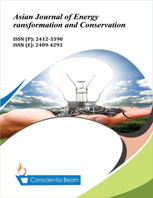Effect of Active Mass in Electrode Disc on Performance of Li1.06ni0.313co0.313mn0.313o2cathode
DOI:
https://doi.org/10.18488/journal.81/2014.1.2/81.2.115.125Abstract
Li1.06Ni0.313Co0.313Mn0.313O2 sample has been synthesized by calcination of co-precipitated precursors. Scanning electron microscopy shows that sample powders are aggregated microplates with average sizes of 200 nm. Electrochemical tests show that Cell-2.0 which has the least mass in cathode disc presents initially a much higher discharge capacity under a current density of 135 mA•g-1, 270 mA•g-1, 540 mA•g-1, 810 mA•g-1, 1080 mA•g-1and 1350 mA•g-1 than the other cells. And Cell-2.0 exhibits better cycling performance with capacity retention of 95.58 % after 40 cycles at 270 mA•g-1 current densities than Cell-2.6(77.18 %), Cell-3.0(74.54 %), Cell-3.2(74.79 %) and Cell-3.6(77.56 %). The cells with a regression equation: DC(mAh•g-1)=a×m(mg) +b, regression coefficient: r≧ 0.75216; a = 7.16984I(C)– 61.50523, regression coefficient: r = 0.95522;b= -39.75258I(C) + 297.48985, regression coefficient: r = 0.9508. Therefore, decreasing the mass in each cathode disc can improve the performance of Li1.06Ni0.313Co0.313Mn0.313O2 cells.

